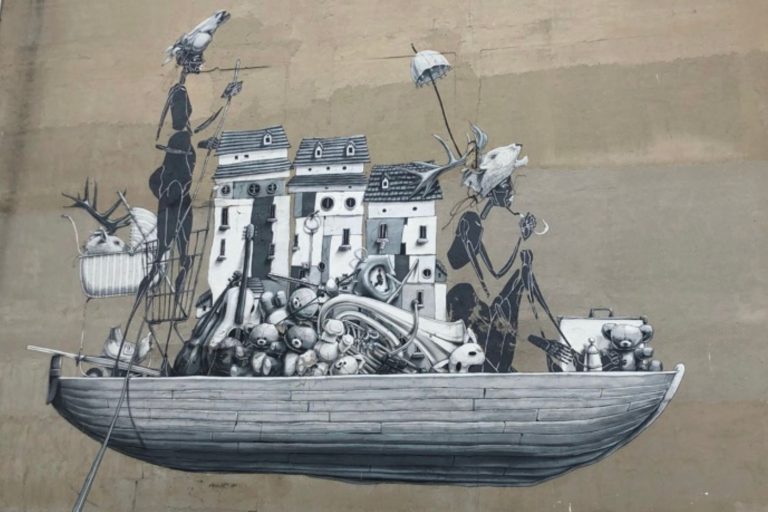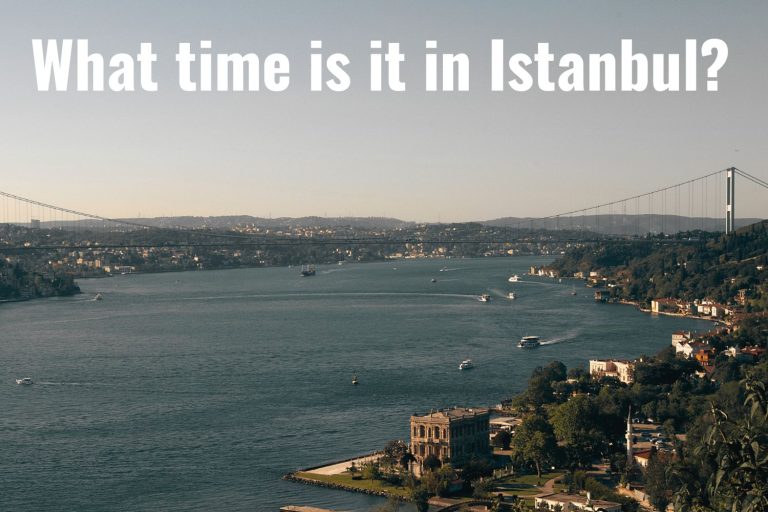Epic Istanbul Walls: a Stunning History of the City Walls of Constantinople

The Art of Living in Turkey contains affiliate links and is a member of the Amazon Services LLC Associates Program. If you make a purchase using one of these Amazon links, I may receive compensation at no extra cost to you. See my Disclaimers for more information.
Have you ever wondered about the majestic Istanbul walls that enchant the cityscape?
SUMMARY: The Istanbul walls fortify a rich history and unique architecture, still marking their historical significance today.
We will explore their rich past, explores their architectural majesty, touch on their present-day relevance and offer a guided tour for those wanting to explore.
One of the Seven Wonders of the World is the Great Wall of China. While a wall might not seem very interesting at first, it can hold great stories.
Of course, the ancient Istanbul walls aren’t nearly as magnificent as the Great Wall of China, but they aren’t just for show either.
These walls hold layers of untold stories and significance throughout Constantinople’s history.
I remember on my first trip to Turkey in 2018 when the old Ataturk airport was still operating and we drove past these walls. I was fascinated that something so old remained.
Now that I live here, every time I am on the European side of Istanbul, I look for the remains of these epic walls, though rarely am I out far enough to see them.
This site is not the Hagia Sophia nor the Galata Tower but it is worth seeing in its own right.
So let’s delve deeper into the heart of Istanbul through its historic walls and see if you also think it is worth adding to your Istanbul itinerary.

History of Istanbul Walls
The Istanbul Walls, often known as the Theodosian Walls, are a remarkable symbol of the city’s rich history, bearing witness to Constantinople’s turbulent past.
But there are actually two sets of walls that also had additions and changes along the way.
Constantinian Walls
While the majority of this article is about the latter walls, it is important to note the original wall of Constantinople.
The first wall was built by Constantine I after he won the Battle of Chrysopolis in 324 and realized that the city needed a line of defense.
While little of it remains and the identity of many of the gates and locations are not agreed upon by scholars, it was an impressive feat for its time.
This wall protected the Western border of the city and remained for a while after the Thodosian Walls were built. Likely, they were eventually destroyed by earthquakes.
Theodosian Walls
In the 5th century, Emperor Theodosius II constructed a much larger and more adequate set of walls in two phases after he realized the original was inadequate and the city was growing beyond its borders.
These walls were so well built that despite many earthquakes, it took 8 centuries for the walls to actually be breached.
All the while great cities of the past like Rome, Alexandria, and more were being overrun but Constantinople’s walls remained.
They are so impressive that Bowerstock in his book Late Antiquity: A Guide to the Postclassical World says they are the most “monumental and successful” fortifications of Late antiquity.
Eventually, Mehmet II overtook Constantinople and made his triumphal entry to the city through the Charisius Gate.
These walls bravely withstood countless sieges, and miraculously, some parts still stand tall today, declaring the splendor of a lost era.
Each stone of these walls is soaked in blood, sweat, and history, making them nothing short of a walking museum.
Even though they were originally crafted to serve a purely practical purpose, now the walls stand as a powerful testament to Istanbul’s enduring legacy.
These ancient Istanbul walls were included in the UNESCO World Heritage Sites of Istanbul in 1985.
This standing invites scholars, historians, architects, and archaeologists from around the world to study the walls, offering continuous insights into the Byzantine Empire and its impact on modern Istanbul.
Blachernae Walls
Since the walls of Istanbul were the biggest defense of Constantinople they were always well maintained and even expanded.
The Blachernae Walls were one of those expansions and perhaps the most significant of them all. They connected the Theodosian Land Walls with the sea wall at the Golden Horn.
They happened in the 11th century to protect the Blachernae Palace located close to the Golden Horn.
The Blachernae Walls, consisting of the Kaligaria Gate, thicker and shorter walls devoid of a moat since it was on a steep incline, also featured towers that were placed closer together compared to the rest of the Theodosian Walls.
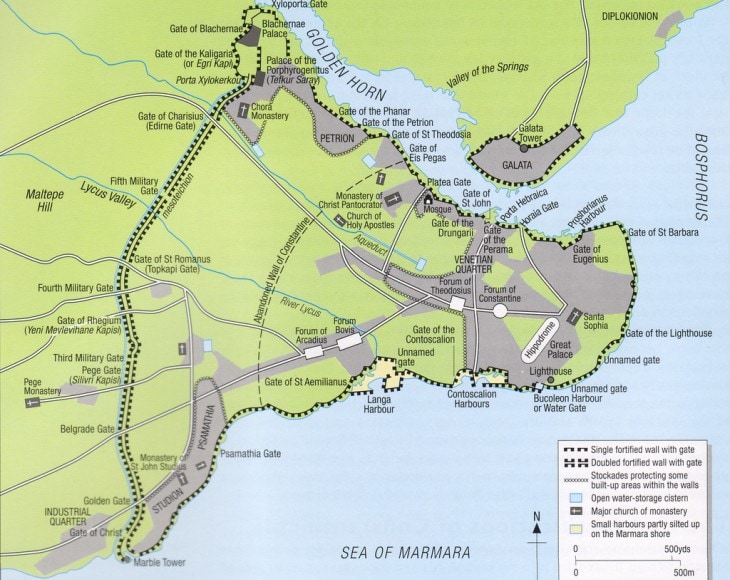
Unique Architecture and Design of Istanbul Walls
The Istanbul Walls are a perfect blend of aesthetics and functionality, reflecting the ingenious engineering capabilities of the Byzantines.
These walls are some of the most outstanding walls in the history of the world. Both their scale and preservation will leave you in awe.
Land Walls
The massive Land Walls, the ones built by Theodosius between 412 and 414 AD, were a double-lined fortification designed to guard Constantinople from attacks by way of land from the west.
This line of defense began with a 60 ft. wide and a 20 ft. deep moat that was protected by a low 5 ft. high wall.
The moat didn’t have standing water but when needed, could be flooded via a piping system. Brilliant.
Then came the 26 ft. high outer wall, usually overshadowed by the large-scale inner wall, which holds great significance as it bore the brunt of the first line of defense.
These first two walls were made from bricks and mixed rubble but had a limestone facing applied.
Then the massive inner wall, made from limestone and bricks, was an impressive feat of architecture and military defense with a height of 36 ft. and 16 ft. thick.
Once upon a time, this inner wall was adorned with 96 towers that reached 65.5 ft. into the sky and stretched an impressive 7.5 miles long, encompassing the seven hills of Istanbul.
Now a mere 3.5 miles of the Theodosian Walls remain intact.
In addition to the impenetrable walls, the crowning gem was the Golden Gate.
The gate was over 40 ft. high, with multiple arches, and a tower on both sides. It was made entirely of marble and had a massive statue up top.
It was likely used for triumphal processions and important guests entered the city, displaying the grandeur Constantinople would be known for.
In addition to the main gate, the other 10 gates and 3 posterns, or back door gates, provided access to the city by way of both land and sea.
Sea Walls
In addition to the land walls, some years later, sea walls were added and strengthened the city’s defensive line.
They were not nearly as intense as the land walls and taxed the pocketbook severely, but they successfully protected the city from sea attacks.
These fortifications hold a rich narrative of the city’s undying defensive spirit and immense historical significance, making Istanbul walls a blend of architectural magnificence and historical wealth.
This is a cool video I found that walks you through the history with some pretty impressive graphics to help you really understand what it is we are talking about.
A few interesting notes on the gates
The gates are the Golden Gate, Yedikule Fortress, Belgrade Gate, five military gates, the Gate of the Spring, the Gate of Rhegion, the Gate of St. Romanus, the Gate of Charisius, and Kerkoporta.
While it is believed these gate names are correct by scholars only three of them, the Golden Gate, the Gate of Rhegion, and the Charisius Gate, can be established with evidence.
Below are a few things I found fascinating regarding the named gates.
Golden Gate
As I mentioned above, this gate, located between towers 9 and 10, was the most impressive and the largest of all the gates. It is the first gate you will encounter if you are coming from the South.
It was likely used on special occasions for triumphal entries or coronations and in rare instances welcoming honored nonimperial guests.
There is also a Greek legend about how when Turks entered the city as it fell to the Ottoman Empire an angel rescued Constantine XI.
The angel turned him into marble and hid him away in a cave below the Golden Gate. Now he waits to be brought back to life to conquer the city back for Christians.
It was an explanation as to why the Turks later walled up the gate, thinking they wanted to guard against this prophecy.
Yedikule Fortress
After the fall of Constantinople in 1453, Mehmet II built a new fort by adding three towers to the existing four (towers 8 through 11) of the Golden Gate, transforming it into the Yedikule Fortress.
While it could no longer be used as a gate, it began to function as a treasury, archive, and eventually a state prison.
Belgrade Gate
Also known as the Xylokerkos Gate was between towers 22 and 23.
What made this gate interesting is that it was named after the fact that there was a wooden amphitheater through this gate.
This gate also had a prophecy regarding it and for a time was walled off but eventually was reopened.
Gate of the Spring
This gate, also known as the Pege Gate or in Turkish the Gate of Selymbria, is located between towers 35 and 36 and was named such because of the monastery located outside the walls.
In 1998 a basement below this gate was discovered with 4th and 5th century reliefs and tombs.
It is believed that this is the gate where the Nicaean Empire gained access to the city and retook it from the Latins in 1261.
Rhesion Gate
It is likely that this is the gate that is also called the Gate of Myriandron because it was located close to a cemetery.
It is the best-preserved of all the gates and is located between towers 50 and 51.
Gate of St. Romanus
This gate is located between towers 65 and 66 and in Turkish is known as Topkapı, or the Cannon Gate.
This is the second largest of all the gates and it is here that Constantine XI was killed in 1453.
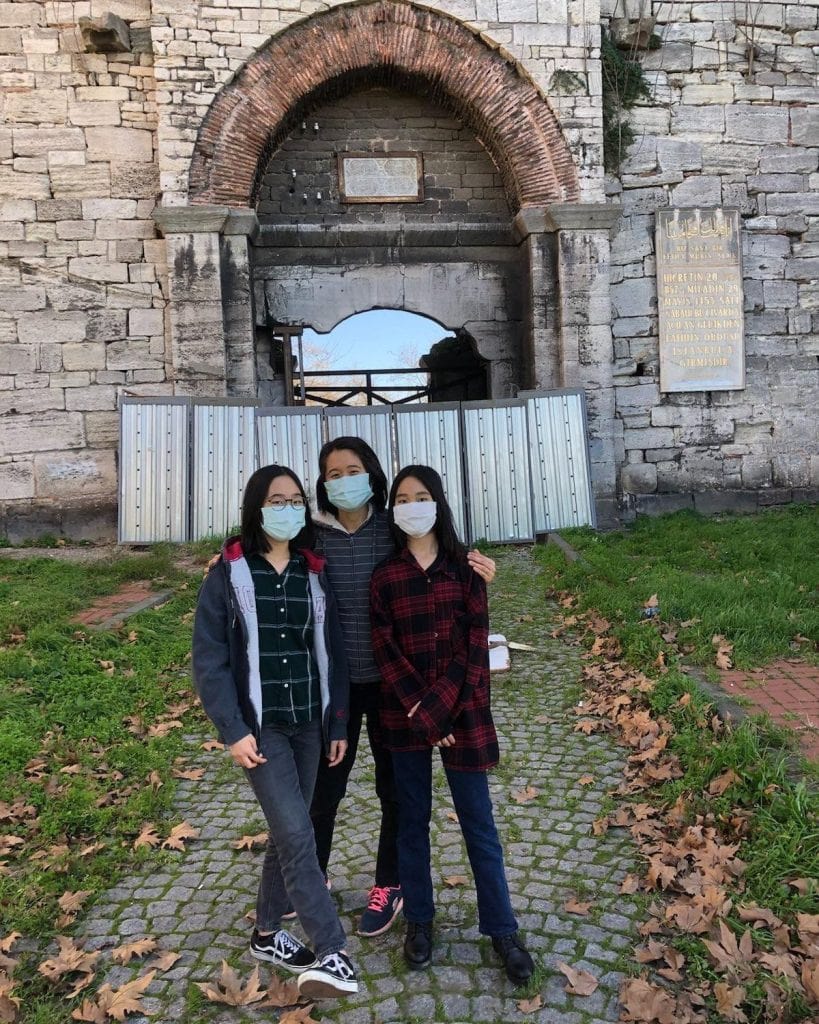
Gate of Charisius
I couldn’t find the exact towers that this gate was between but it is after the 5th military gate which stands between towers 80 and 81.
From my research, it looks like it was close to the 91st tower atop the sixth hill which is the highest point of the old city.
This gate is second in importance only to the Golden Gate. It is here that Mehmet II made his triumphal entry into the conquered city of Constantinople in 1453.
Kerkoporta
This is actually a postern but deserved its own header because of its importance.
This gate was the reason the city of Constantinople was finally able to be breached and conquered.
According to Doukas, a Byzantinian historian, this small postern was left open by accident allowing the first group of Ottoman troops into the city.
After raising their banner on top of the inner wall and attacking the Greeks below, panic began to spread and eventually led to the fall of the city.
Imagine being the person who left that door unlocked…talk about a history maker.
There is probably a lesson here about how the smallest of doors can lead to the biggest of downfalls or something but I’ll leave that to you.
Other Posterns
- A postern was added after the Yedikule Fort between towers 11 and 12 and was called the Yedikule Kapısı, or Yedikule Door.
- Between towers 42 and 43, north of the Sigma, or the third military gate
Importance of the Walls that still stand in modern-day
Even today, many parts of the walls continue to be a significant symbol of the city’s past and present, having weathered countless wars and empires.
The walls, cherished for their historical narrative, now act as a favorite destination for global tourists.
From casual walkers, and inquisitive scholars, to ardent history buffs, the walls attract diverse visitors all year round.
Their rustic charm and impressive strength evoke awe and admiration among those who appreciate the cultural heritage and ancient architecture.
Inhabitants of Istanbul also live their everyday lives in the shadow of these giant fortifications, encompassing them as an everyday part of life.
There are even some places where the walls, especially the Constantinian Walls, have become a part of present-day architecture.
The Istanbul Walls are an enduring symbol of Istanbul’s evolution from an ancient Byzantine city to the sprawling metropolis it is today.

Exploring the Land Walls of Constantinople
Whether you are a history enthusiast, a lover of architecture, or a curious wanderer, you will enjoy the Istanbul Walls.
You can either explore the walls on your own as I will explain below or you can do a half-day tour and get even more out of the trip.
I recommend this Istanbul Half-Day Historic Tour of Byzantium. You will be able to see the highlights, get insights that a local Turkish tour guide will know, as well as see a few other points of interest along the way.
You can also walk the route on your own. It would take a couple of hours depending on your pace or instead of seeing them all, you could just visit a couple of the gates.
If you want to see them all, begin your exploration from the Mermer Kule and work your way towards the Blachernae Walls. You can see the map for more details.
If you follow the walls from the South end to the North end there are few spots that are of interest along the way.
When you make it to the Gate of Charisius, don’t miss the Chora Museum where you can admire the stunning Byzantine mosaics and frescoes.
It is located just a short walk away from the walls and is a must-visit for anyone interested in the art history of Istanbul.
You can also check out the the Tefkur Saray, or Tefkur Palace which is a part of the Blachernae Palace. The Blachernae Walls were added to protect this part of the city.
If you want to do a walking route on your own, I really like this free walking tour.
There are many local restaurants and cafes along the route where you can enjoy authentic Turkish cuisine and at the end of the day, you can enjoy a cup of traditional Turkish tea or coffee while taking in the vibrant city life pulsating around you.
If you end around sunset time, you will be able to experience the magnificent views from atop the walls as the city bathed in the warm glow of the setting sun.
It really is magical.
Istanbul City Walls FAQs
What is the historical significance of the Istanbul Walls?
The Istanbul Walls, also known as the Byzantine or Theodosian Walls, were built in the 5th Century during the reign of Emperor Theodosius II. They played a crucial role in the history of Istanbul, protecting the city and its inhabitants through numerous wars and invasions over the centuries.
What unique architectural features do the Istanbul Walls have?
The Istanbul Walls exhibit Byzantine architectural prowess with their massive stone structure, multiple layers for added defense, and strategically built towers and gates. The walls also incorporate parts of previous, older walls, adding layers of historical depth to the architecture itself.
Why are the Istanbul Walls important today?
Today, the Istanbul Walls act as a symbolic landmark representing Istanbul’s layered history, resilience, and cultural richness. Beyond their historical significance, they are a key tourist attraction, offering spectacular views of the city and a window into Istanbul’s past.
How can I explore Istanbul walls?
The walls can be explored on foot allowing you to appreciate close-up their architectural details and the panoramic views they offer. A comprehensive guide, like this one, can enhance your understanding of the various points of interest along the walls and their significant history.
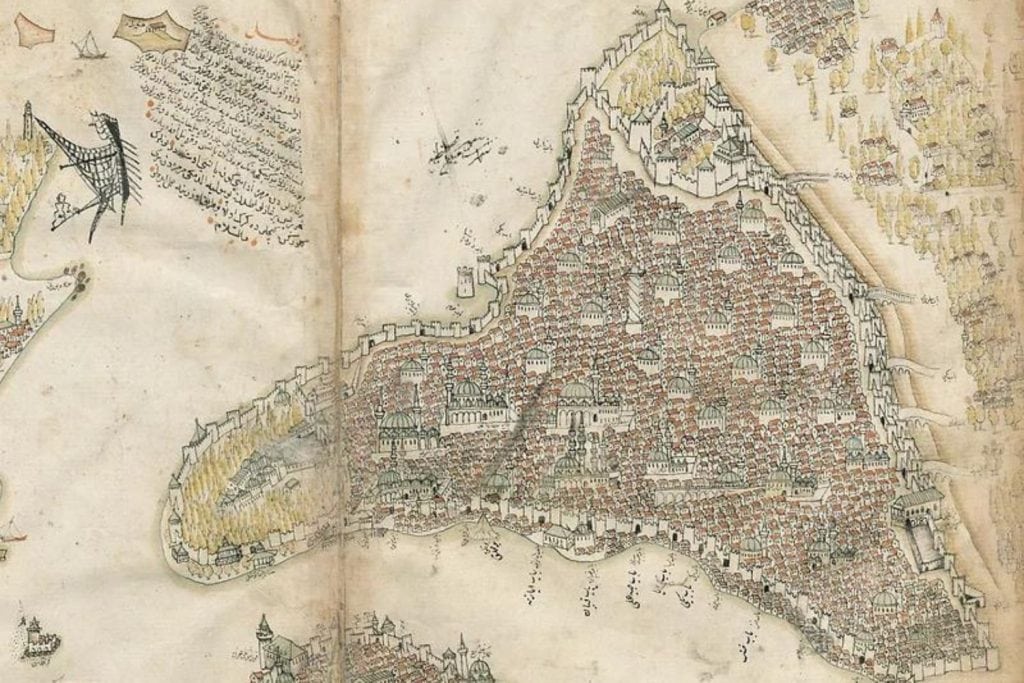
Final thoughts on the Theodosian Walls of Istanbul
As the sun sets over the vibrant city of Istanbul, its ancient walls stand tall, a testament to the rich tapestry of history woven into the fabric of this sprawling metropolis.
Of course, they are not as splendid as the Great Wall of China but still these walls, with their layers of untold stories, hold a unique, captivating charm.
From the original Constantinian Walls to the monumental Theodosian Walls to the later addition of the Blachernae Walls, each stone is imbued with the blood, sweat, and history of a bygone era.
These walls, once built for practicality, now stand as a living museum, inviting scholars and tourists alike to delve into Istanbul’s storied past.
Today, inhabitants of Istanbul live in the shadow of these ancient walls, their rustic charm blending seamlessly with the city’s modern landscape, much like the ruins in Rome.
Whether you explore these historic landmarks on a guided tour or meander through their remnants on your own, the Istanbul Walls offer a glimpse into the soul of this timeless city.
So, as you stand atop these ancient ramparts, surrounded by the busy life of Istanbul, take a moment to appreciate the enduring legacy of these magnificent walls, standing as silent guardians of a city that has seen empires rise and fall.
Read more:
- Check out the National Animal of Turkey…can you guess what it is?
- Want to check out the capital? Know what it is?
- Don’t miss out on 7 famous churches while you’re out and about
- Wondering if Turkey is safe? Read on…
- Read more about when Turkiye joined NATO
Turkey Vacation Basics
When I plan a trip these are the websites I use. Hope they help you plan your next adventure as well!
FLIGHTS: I am a huge fan of Skyscanner and WayAway.
VISAS: You can use the free e-visa portal here but for a few extra dollars you can use iVisa and someone else will handle any issues that may come up.
E-SIM: When I traveled to SE Asia I discovered e-sims and I’m never going back. Airalo has been easy and cheap!
TRAVEL INSURANCE: I use TravelInsurance.com for my trips abroad.
CAR RENTAL: I have loved working with Discover Cars when I rent cars in country.
AIRPORT TRANSFERS: I have used these transfers many times and they are always great. If you’d like more options, I also recommend GetTransfers.com as they allow you to compare companies.
ACCOMMODATION: Find the best Turkey hotel deals on Booking.com.
CITY TOURS & DAY TRIPS: You can browse GetYourGuide’s website to find just the tour you’re looking for!
